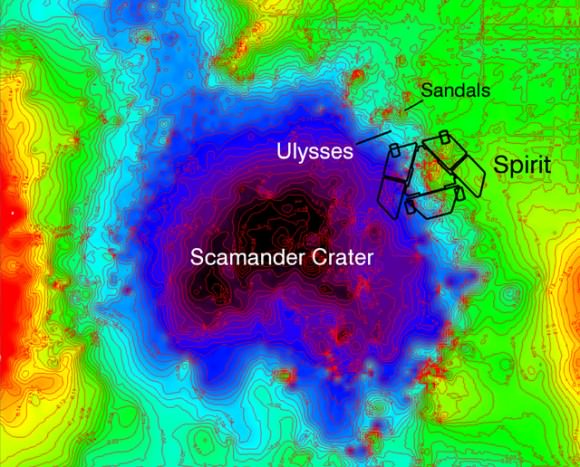US, China Agree to Discuss Cooperation in Space
The United States and China have agreed to discuss expanded cooperation in space exploration and science. According to a joint statement released in Beijing on Tuesday, the two counties will start a "dialogue" on human space flight and exploration, and both nations looked forward to reciprocal visits by the NASA administrator and appropriate Chinese space leaders in 2010. NASA Administrator Charlie Bolden, currently in Japan, said cooperation on the high frontier could pay dividends for both countries.
(...)
Read the rest of US, China Agree to Discuss Cooperation in Space (220 words)
Spirit Extrication, Day 1: Drive Stopped After 1 Second
Mission managers sent the drive commands to the Spirit rover at 4 a.m. EST (0900 GMT) today, — Nov. 17, 2009 and Sol 2088 for the rover — but the data back from the rover indicates the rover stopped less than one second after it began moving its wheels when the rover automatically sensed more lateral tilt than permitted. A tight limit on vehicle roll and pitch of less than 1 degree change was set for this first drive, and as the rover began its first move, it sensed that its roll was outside the allowed limit and safely stopped the drive. Those driving the rover say they are starting cautiously, setting initial parameters with very tight limits with the knowledge that these hair triggers may stop the rover frequently. As the project gains confidence with extrication, these limits may be relaxed. From this limited drive the team now has a more accurate measurement of vehicle roll and pitch that will be used for subsequent drive planning. Analysis is continuing. The team hopes to completion their planning of the next drive on Wednesday, Nov. 18, with possible wheel movement again on the 19th (Sol 2090)
(...)
Read the rest of Spirit Extrication, Day 1: Drive Stopped After 1 Second (53 words)
ALMA Telescope Makes First Observations
The ALMA telescope located high in the Chilean Andes made its first measurements on Tuesday using just two of the eventual 66 antennas that will comprise the array. The Atacama Large Millimeter/submillimeter Array took interferometric measurements of radio signals, or "fringes," from a distant quasar at sub-millimeter wavelengths. Astronomers said the data from the two 12-meter antennas provided unprecedented sensitivity and resolution, and observations at a wavelength of less than 1mm showed ALMA was now truly a "submillimeter" as well as millimeter-wave telescope.
(...)
Read the rest of ALMA Telescope Makes First Observations (140 words)
New Movie Reveals Birth of Super-Suns

A two-year look at "proplyds," or protoplanetary disks in the constellation Orion has provided astronomers with a new high-resolution time-lapse movie that reveals the process of how massive star form. The birth of the largest stars has been mysterious, in part, because massive stars are rare and tend to spend their youth enshrouded by dust and gas hiding them from view. "We know how these stars die, but not how they are born," said Lincoln Greenhill, a principal investigator for team using radio images a thousand times sharper and more detailed than any previously obtained.
(...)
Read the rest of New Movie Reveals Birth of Super-Suns (540 words)
Leonids Light Up The Night – 2009 Leonid Meteor Shower Informati
The annual Leonid Meteor Shower is about to light up the night… And the time to start watching is now. The year 2009 will not see a Leonid storm, but an outburst for sure. There are still some uncertainties regarding the time of maximum of the 1466 trail. For those of you seeking a definitive date and time, it isn't always possible, but we can learn a whole lot about when and where to look. (...)
Read the rest of Leonids Light Up The Night – 2009 Leonid Meteor Shower Information (874 words)
Go to Bed for NASA

If you don't quite have the right stuff, but always thought being an astronaut would be cool, here's a way for you to contribute to the US space program. Go to bed. With NASA. "I would absolutely recommend it. It was one of the most amazing experiences of my life," said Heather Archuletta, who has participated in three different studies for the Human Test Subject Facility (HTSF) at the Johnson Space Center. These ongoing studies use long-term bed rest to simulate the effects of micro-gravity an astronaut would experience during extended space flight. "This is a great opportunity for the general public to help NASA with their scientific research," said John Foster, who works for Solitaire Creative Services, a company that promotes the studies.
(...)
Read the rest of Go to Bed for NASA (985 words)
35 Radio Observatories Link to Break Record

Ever wondered what the largest telescope on the Earth is? Well, this coming Wednesday and Thursday of this week, the largest telescope ever assembled will take observations for a whole day. How big is the telescope? About the size of the whole Earth! 35 radio telescopes on 7 continents will link together for one whole day in an effort to observe distant quasars as part of an initiative to improve the reference frame that scientists use to measure positions in the sky.(...)
Read the rest of 35 Radio Observatories Link to Break Record (525 words)
Atlas Launch halted by ORCA; Shuttle Atlantis Next in Line
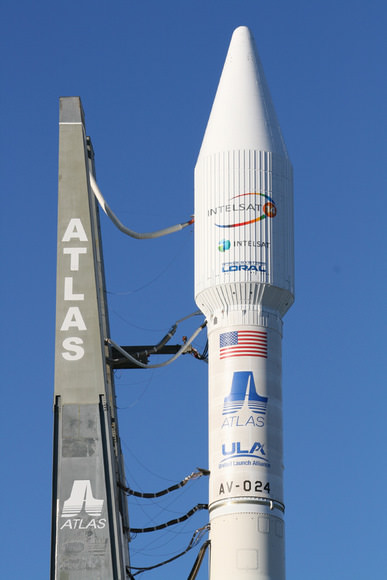
(Editor's Note: Ken Kremer is in Florida for Universe Today covering the current launch attempts of the space shuttle and Atlas) Image caption: The Atlas 5 will orbit the commercial Intelsat 14 communications satellite. This photo shows upper portion of rocket and umbilical cord connections leading from mobile launch platform to the decaled 4 meter wide white colored payload fairing and Centaur upper stage. The flight is designated as tail number AV-024. Credit: Ken Kremer
Shortly after midnight on Saturday November 14 the launch of an Atlas 5 rocket poised at Complex 41 and bathed in xenon lights was suddenly halted when engineers discovered a power dropout with the ORCA, or Ordnance Remote Control Assembly.
(...)
Read the rest of Atlas Launch halted by ORCA; Shuttle Atlantis Next in Line (671 words)
Designing a Better Astronaut Glove
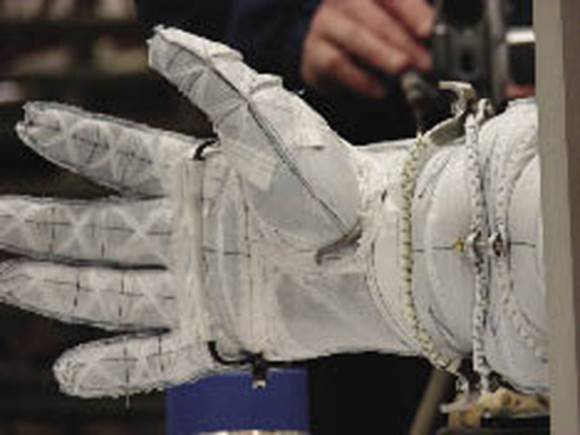
If you can build a better mousetrap, then you can certainly build a better glove for astronauts! Making a glove that both protects the hands of the astronauts in the harsh environment of space or on the Moon, and allowing them the dexterity to manipulate tools is a tough challenge for NASA. That's why they are holding the second Astronaut Glove Challenge on November 19th, with a $400,000 prize for the best glove.(...)
Read the rest of Designing a Better Astronaut Glove (334 words)
Water on the Moon
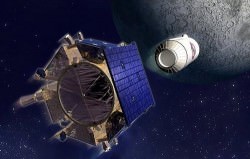
Water has long been suspected to exist in the permanently shadowed polar craters on the Moon, and now the LCROSS impact has allowed scientists to make a direct and definitive finding of this precious resource in a place NASA and other space agencies are considering exploring with human expeditions. Many say this could be a game-changing discovery for the future of lunar science and exploration. Unlike the previous announcement in September of water on the Moon, where water exists diffusely across the moon as hydroxyl or water molecules adhering to the surface in low concentrations, this new discovery could mean underground reservoirs of water ice. "There is too much water to be just absorbed in the soil," said Anthony Colaprete of the LCROSS mission at Friday's press conference. "There has to be real solid ice there. You could melt it and drink it."
(...)
Read the rest of Water on the Moon (326 words)
Ok, Spirit Rover, Let's Blow This Pop Stand!
On Monday, Nov. 16, NASA will begin transmitting commands to the Spirit rover on Mars to begin the extrication process to free the rover from where she has been stuck since April 23rd of this year. While members of the rover team have not given up on getting the rover to rove again, they were very guarded at a press conference Thursday in showing any optimism about removing Spirit from her predicament. "Spirit is facing the most challenging situation we have seen on Mars," said Doug McCuistion director, Mars Exploration Program. "We know a lot of people view Spirit with great affection, and have followed along with the mission and seen new vistas and landscapes along with the rover to uncover new knowledge about our sister planet. But I want everybody to be realistic. This is a serious situation and if it cannot make the great escape from this sandtrap its likely this lonely spot might be where Spirit ends its adventures on Mars."
(...)
Read the rest of Ok, Spirit Rover, Let's Blow This Pop Stand! (525 words)
LCROSS Confirms "Buckets" of Water on the Moon
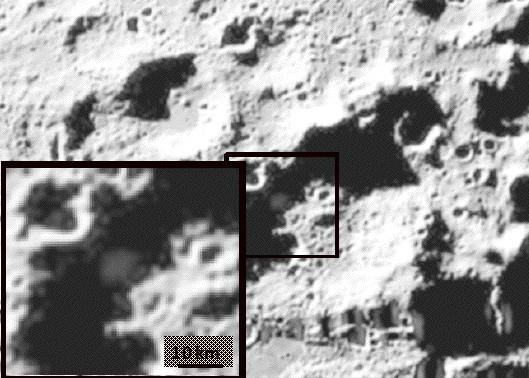
The LCROSS team announced today the mission successfully uncovered water during the Oct. 9, 2009 impacts into the permanently shadowed region of Cabeus cater near the moon’s south pole. "Indeed yes, we found water. We didn't find just a little bit we found a significant amount," said Tony Colaprete, principal investigator for LCROSS at a press conference. The team was not able to put a concentration of how much water is held in the lunar regolith, but in a fraction of the 20-30 meter crater the impact made, they were able to observe about 25 gallons (95 liters) of water with spectroscopic data. Colaprete held up a 2-gallon (7 liter) bucket, to demonstrate how much they found.
(...)
Read the rest of LCROSS Confirms "Buckets" of Water on the Moon (622 words)
Weekend SkyWatcher's Forecast – November 13-15, 2009
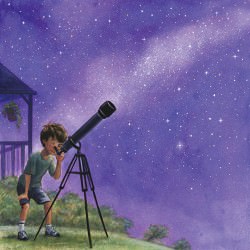 Greetings, fellow SkyWatchers! It's a dark sky weekend and for many of us, the weather scene is improving greatly. Are you ready to enjoy some astronomy? Then take the chance to get out in the early morning and admire the alluring dance of the "Old Moon in the New Moon's Arms" as it silently changes planetary partners over the next few days and catch some bright and early Leonid meteors. You won't need gigantic optics to enjoy this weekend's studies as we have a look at some very impressive double stars, galaxies and open clusters. Dust off those optics! And meet me in the backyard…. (...)
Greetings, fellow SkyWatchers! It's a dark sky weekend and for many of us, the weather scene is improving greatly. Are you ready to enjoy some astronomy? Then take the chance to get out in the early morning and admire the alluring dance of the "Old Moon in the New Moon's Arms" as it silently changes planetary partners over the next few days and catch some bright and early Leonid meteors. You won't need gigantic optics to enjoy this weekend's studies as we have a look at some very impressive double stars, galaxies and open clusters. Dust off those optics! And meet me in the backyard…. (...)
Read the rest of Weekend SkyWatcher's Forecast – November 13-15, 2009 (979 words)
NASA Science News for November 13, 2009
The argument that the Moon is a dry, desolate place no longer holds water. At a press conference today, researchers revealed data from NASA's LCROSS mission indicating that water exists in a permanently shadowed lunar crater.
FULL STORY at
http://science.nasa.gov/headlines/y2009/13nov_lcrossresults.htm?list1035898
Unusual Massive White Dwarf Stars Have Oxygen Atmospheres
White dwarfs are strange stars, but researchers recently discovered two of the strangest yet. However, these two oddballs are a missing link of sorts, between massive stars that end their lives as supernovae and small to medium sized stars that become white dwarfs. Somehow, these two once-massive stars avoided the core collapse of a supernova, and are the only two white dwarfs known to have oxygen-rich atmospheres. These so-called massive white dwarfs have been predicted, but never before observed.
(...)
Read the rest of Unusual Massive White Dwarf Stars Have Oxygen Atmospheres (544 words)




